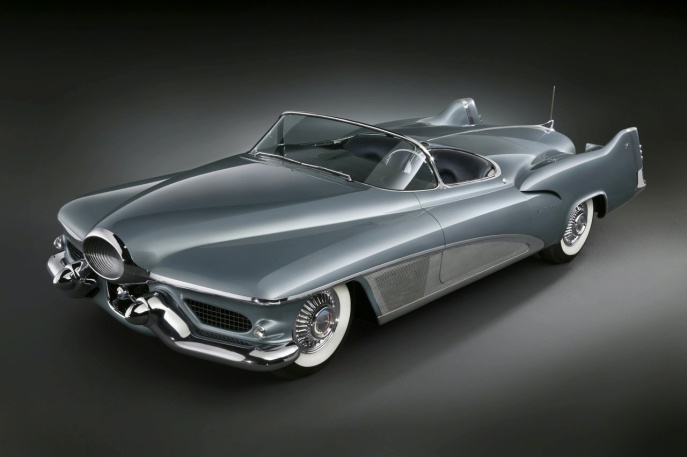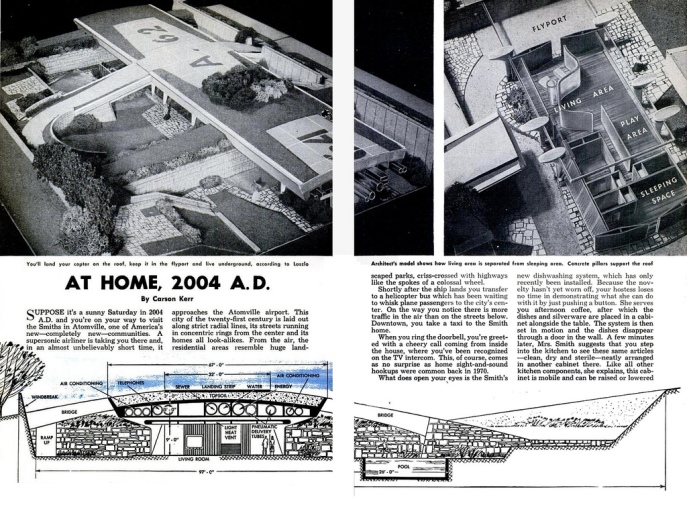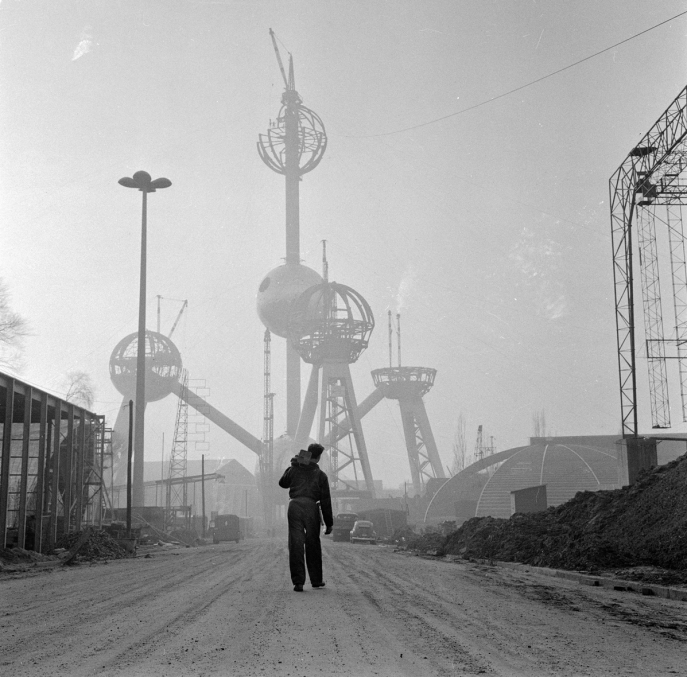Being a big fan of mid-20th century concept cars, and being in the market for a new car in the early 21st century, it can be a very deflating reality check on how disappointing the future has become. One could go from make to make, lot to lot, row to row – after about three or four different stops it sinks in. 21st century automotive design is merely an exercise in the standard and mundane.
Yes, there are a lot of gadgets that were first conceptualized in the mid-20th century flourish of creative imaginings found within today’s vehicles – but the designs. You have your standard sedan, you have your standard coupe, your standard fuel-efficient – interestingly enough, the micro-cars seem to have the only standout designs around. The same can be said of the ‘throwbacks’ that are smartly being re-realized by a couple American auto companies. For most vehicles today, if it weren’t for the make medallions it’s nearly impossible to tell what is what.
So, as a reminder of the good ol’ days when auto design was still an art and an enthusiastic expression of things to come, let’s take a look at some of the creative, and yes, sometimes ‘way out’ concepts from the fantastic world of mid-20th century design. Once aptly referred to as ‘dream cars.’

1951 Buick XP-300

1951 Buick LeSabre Concept

1952 Chrysler D’Elegance

1953 Ford X-100

1954 Ford FX-Atmos

1954 Packard Panther-Daytona Roadster Concept

1954 GM XP-21 Firebird 1

1954 Pontiac Bonneville Special

1955 Buick Wildcat

1955 Chevrolet Biscayne Motorama Dream Car Concept

1955 Ghia Gilda Streamline X Coupe

1955 Lincoln Indianapolis Concept

1956 Buick Centurion Concept

1957 Dodge Dart Concept

1957 Chrysler Diablo Concept

1957 Gaylord Gladiator

1959 Cadillac Cyclone Concept

1960 GM Firebird IV Concept

1960 Ford Predicta Custom

1961 Chrysler Turboflite Concept

1962 Ford Cougar 406 Concept

1962 Ford Ghia Selene II Concept

1964 GM-X Stiletto Concept

1964 Mercury Comet Super Cyclone

1964 Ford Aurora Concept

1965 Cadillac XP-840 Eldorado Fastback Concept

1965 CRV Piranha by Gene Winfield
And something a bit different:

The 1965 GMC Bison Bullet
Phew! So there ya have it. Love ’em or hate ’em one thing’s for sure – these concepts stir up a reaction. They have personality. They have guts. Not everyone was impressed during the ‘dream car’ heydays. We’ll leave this post with just one more image – Ken Johnson of the New York Times will have the last word.

Russ Heath ‘Capri Satellite’ cartoon parody (1957)
The Capri Satellite, drawn in black ink by Russ Heath in 1957, is a cartoon parody of futuristic cars. Part Sputnik, part Edsel, it is a spherical flying machine with fins and antennas and a comically elaborate front bumper and grille. This and other satiric images suggest that for every true believer there was a skeptic ready to pounce on the goofy excesses of imagination to which visionaries are prone.

























































